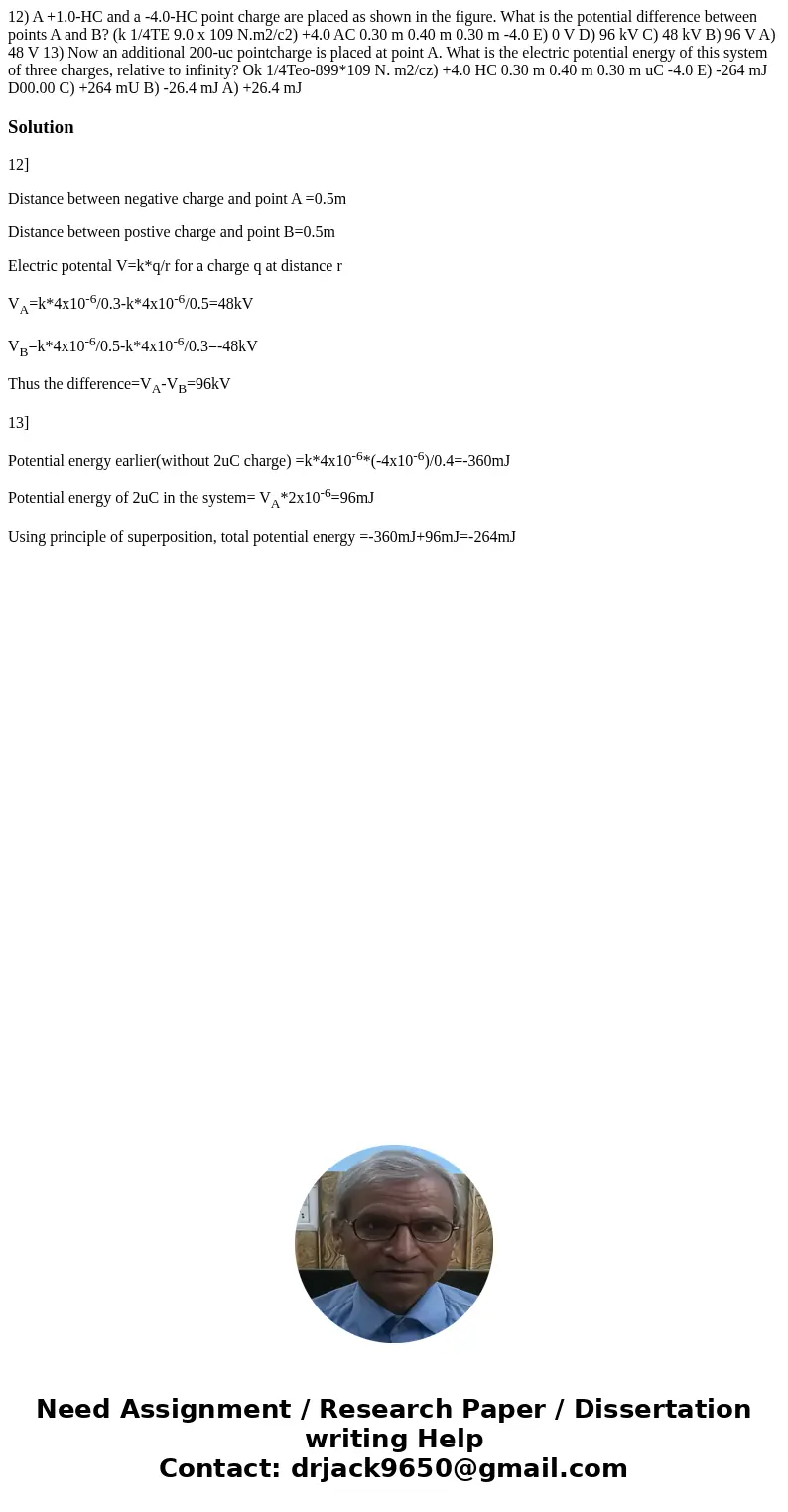12 A 10HC and a 40HC point charge are placed as shown in the
12) A +1.0-HC and a -4.0-HC point charge are placed as shown in the figure. What is the potential difference between points A and B? (k 1/4TE 9.0 x 109 N.m2/c2) +4.0 AC 0.30 m 0.40 m 0.30 m -4.0 E) 0 V D) 96 kV C) 48 kV B) 96 V A) 48 V 13) Now an additional 200-uc pointcharge is placed at point A. What is the electric potential energy of this system of three charges, relative to infinity? Ok 1/4Teo-899*109 N. m2/cz) +4.0 HC 0.30 m 0.40 m 0.30 m uC -4.0 E) -264 mJ D00.00 C) +264 mU B) -26.4 mJ A) +26.4 mJ 
Solution
12]
Distance between negative charge and point A =0.5m
Distance between postive charge and point B=0.5m
Electric potental V=k*q/r for a charge q at distance r
VA=k*4x10-6/0.3-k*4x10-6/0.5=48kV
VB=k*4x10-6/0.5-k*4x10-6/0.3=-48kV
Thus the difference=VA-VB=96kV
13]
Potential energy earlier(without 2uC charge) =k*4x10-6*(-4x10-6)/0.4=-360mJ
Potential energy of 2uC in the system= VA*2x10-6=96mJ
Using principle of superposition, total potential energy =-360mJ+96mJ=-264mJ

 Homework Sourse
Homework Sourse